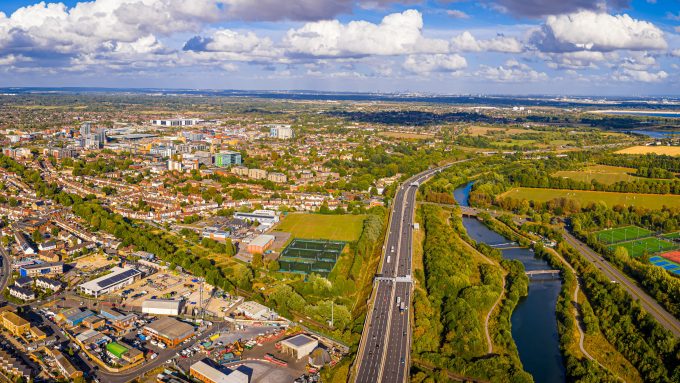
PlanTech: Can Local Planning Authorities come together?

The art of successful urban planning should always be underpinned by local context, but in practice it tends to be constrained by a stifling uniformity across England’s many distinct localities. The recent emergence of PlanTech however has demonstrated how key challenges can be addressed and transformed with better use of technology and data.
There are 338 local planning authorities (LPA) in England, all of which are directed by Central Government and case law. Significantly, they all face similar technical and administrative challenges to meet their responsibilities: from the resource intensive process of validating planning applications upon receipt and meeting the pressures of issuing timely planning permissions, to monitoring growth and development trends in the area and delivering expensive and complex new local plans.
The recent emergence of PlanTech however has demonstrated how key challenges can be addressed and transformed with better use of technology and data. Several LPAs have already started their digital transformation as they seek to understand how data, digital and designed approaches can make their planning services more efficient, effective and transparent. And at the same time, the Central Government has also recognised the value of a more digital planning system by setting up the Geospatial Commission in 2017. Yet despite these positive signs of digital evolution outlined above, a new dilemma is now emerging.
Whilst it is broadly understood that a one-size-fits-all PlanTech digital solution would in all likelihood be unresponsive to that local context so critical to successful urban planning, creating a bespoke digital solution for each and every local authority would be both prohibitively impractical and unaffordable.
To add to the complexity of PlanTech and digital transformation, local planning authorities are constrained by a lack of publicly available funds, and what little does remain tends to focus on delivering skeleton services.
There are rarely any funds left to undertake Research and Development (R&D) for digital innovation. This critical first phase technological innovation is where we map out in detail the precise challenges facing users of the planning system (i.e. planners, developers, citizens and architects) so that any investment in digital infrastructure can fully respond to their present and future needs. But currently the pace, quality and scale of the digital transformation of the planning system is growing unevenly across the UK. This is compounded by difficulty in finding and engaging suitable suppliers, the complexities in local authority procurement, a lack of digital skills and capacity within LPAs, and often missed opportunities from local authorities to work together to deliver PlanTech discovery research projects.
We need more collaboration on a national scale amongst local planning authorities to tackle shared R&D planning challenges. Collaboration would allow us to share results of research and avoid ‘silo-fication’ and duplication of work. Collaboration would increase the pool of talent, resources and knowledge in tackling these challenges, it would create a more comprehensive view of an issue, and would allow for the initial PlanTech cost to be broken down and made affordable to all.
Which is where Connected Places Catapult can help. By using our market-neutral position and domain expertise in PlanTech and PlanTechdigital planning, we can help accelerate the transition to a more designed, digital and data-led planning system. Which is why we are building a consortium of local planning authorities with commitment, ambition and (small) budgets available to take this program forward. We have already created a long list of challenges where the planning system would benefit from digital transformation, and reached out to our networks of practitioners to identify which ones need prioritisation.
But we’re interested to see now if this has changed since COVID-19 and the new challenges it presents have so drastically changed the landscape.
Our initial research has already identified one priority challenge that we have now released here – which is the need to prioritise and transform the way local authorities undertake public engagement for their local plan. Local plans are one of the most important documents about a place as they define where and what kind of developments should be allowed. Engagement is a key part in the creation of a local plan and its democratic process, as it is a chance for citizens to influence the nature of future development. Yet local authorities continue to struggle to effectively engage communities and stakeholders.
The local plan is a full-stack challenge. To start with, for many, navigating a local plan, let alone responding to its consultation is not a simple task. The documents, all of which can be rather confusing, are distributed across local authority websites, lack standardized structure, and are full of legal and professional jargon – and that’s all before you even consider the large volumes of supporting PDF documents, and poorly presented maps, data and tables they reference.
Additionally, the data-rich evidence base that supports local plans is not connected to the policies within them. This restricts the ability for others to re-use and update the data. Standardised and machine-readable communication of the local plans would:
- create opportunities for new digital products and services to be developed and, more importantly
- could lead to an increase in the quality and volume of responses to deliver places that reflect what local citizens need and want.
We are looking for local authority partners to come together and share the cost of the investment needed to explore and solve this challenge. If you are interested, please contact us – and together we can procure the right suppliers to transform this process.





